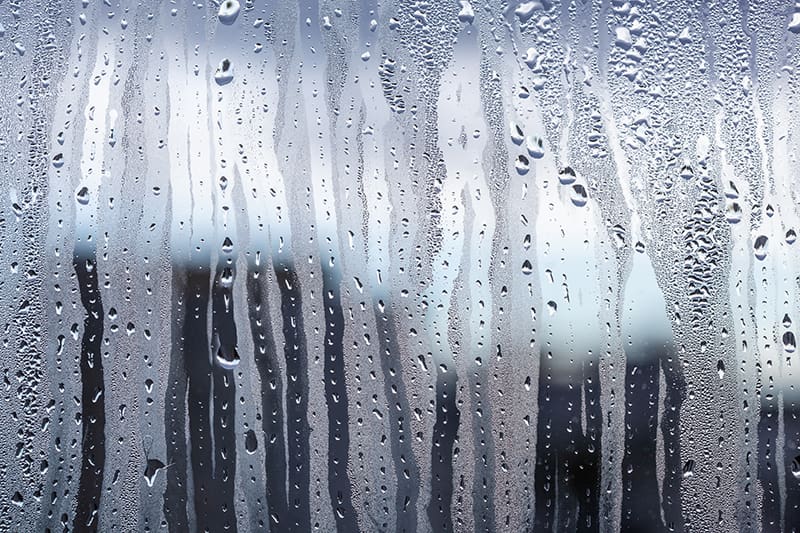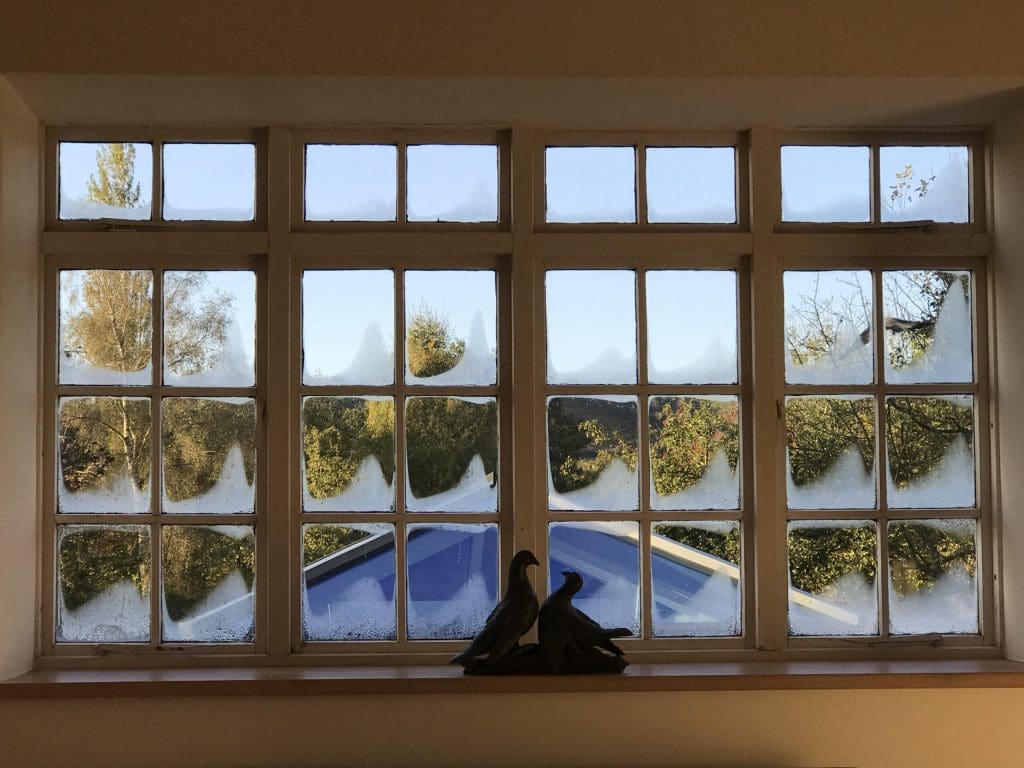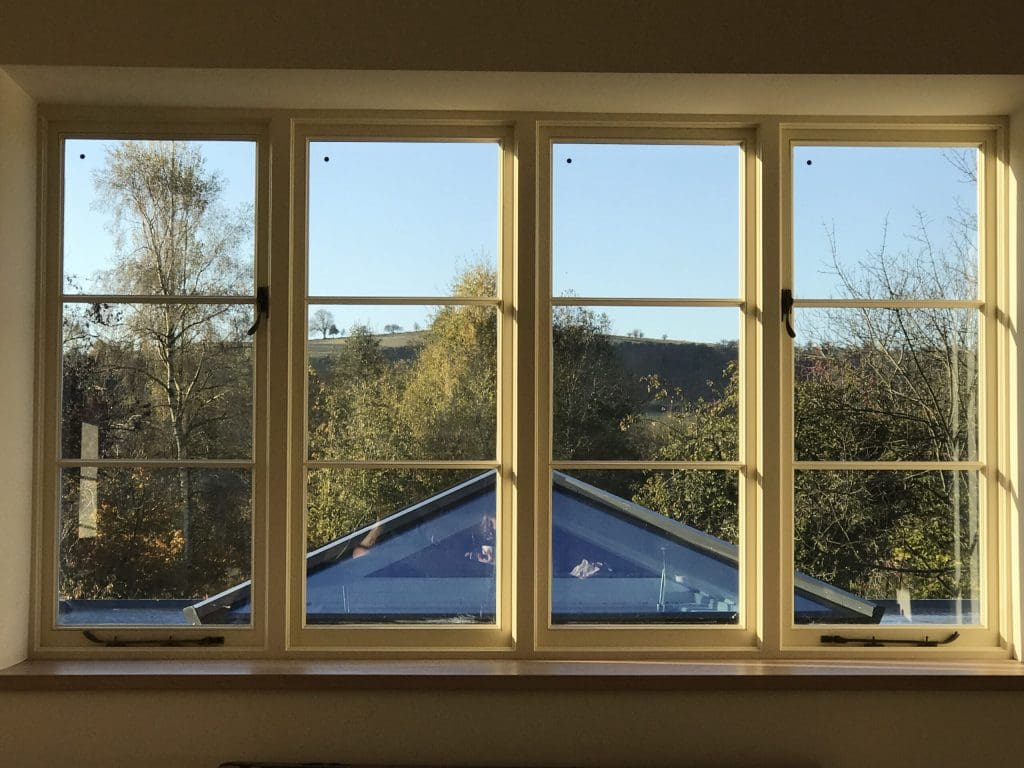
Condensation on Windows
Explore the causes and detrimental effects of condensation on windows, and discover how vacuum glazing offers an effective solution. Improve energy efficiency, eliminate condensation, and create a healthier, more appealing indoor environment.
Solving Condensation Issues: The Advantages of Vacuum Glazing
Condensation on windows is a common issue faced by many homeowners and building occupants. The sight of water droplets forming on the glass surface can be not only frustrating but also a cause for concern. In this blog post, we delve into the world of condensation, exploring its causes, effects, and the impact it can have on buildings and the health of individuals. We will also unveil an innovative solution that tackles condensation head-on: vacuum glazing. By understanding the challenges posed by condensation and embracing this advanced glazing technology, you can transform your windows into clear, moisture-free panes, creating a more comfortable and healthier living environment. Let’s dive in and discover the key to combating condensation on windows.
I. Understanding Condensation on Windows:
Condensation on windows occurs when moisture in the air transforms into liquid droplets on the glass surface. It is a common phenomenon influenced by several factors, including temperature differentials and humidity levels within a home.
1. Condensation Formation:
Condensation arises when the air inside a home becomes saturated with moisture, reaching its dew point. The dew point is the temperature at which the air can no longer hold all its water vapour, resulting in the release of excess moisture onto cooler surfaces like windows.
2. Sources of Moisture:
Moisture is released into the atmosphere within a home through various everyday activities such as cooking, showering, and even breathing. These activities contribute to increased humidity levels indoors, creating an environment conducive to condensation formation.
3. Condensation on Single Glazed Windows:
Single glazed windows are particularly susceptible to condensation due to their limited insulation properties. The single pane of glass allows for greater heat transfer, resulting in colder glass surfaces and a higher likelihood of condensation formation.
4. Condensation on Double Glazed Windows:
Double glazed windows, consisting of two glass panes with an insulating air or gas-filled cavity between them, can also experience condensation. The occurrence of condensation in double glazing may be attributed to a compromised cavity or seal, allowing moisture to penetrate the space between the panes.
5. Reducing Moisture in the Air:
Homeowners can take several measures to reduce the amount of moisture in the air, thereby minimising condensation on windows. These include adequate ventilation through the use of extractor fans, opening windows for improved air circulation, and using dehumidifiers in areas prone to high humidity, such as kitchens and bathrooms.
Understanding the factors that contribute to condensation on windows is crucial in addressing this issue effectively. By implementing strategies to reduce moisture levels and considering advanced glazing solutions like vacuum glazing, homeowners can create a healthier and more comfortable living environment free from the nuisance and potential damages caused by condensation.
Causes of Condensation in the Home:
1. High Humidity Levels:
Excessive moisture in the air, often resulting from activities like cooking, showering, and drying clothes indoors, can increase the likelihood of condensation on windows.
2. Inadequate Ventilation:
Insufficient airflow and ventilation in the home hinder the movement of moist air, leading to higher humidity levels and condensation buildup.
3. Poor Insulation:
Insufficient insulation in walls, ceilings, and windows allows for greater temperature differentials between indoor and outdoor surfaces, increasing the chances of condensation formation.
4. Single Glazed Windows:
Single glazed windows have minimal insulation properties, allowing for more significant heat transfer and colder glass surfaces, making them more prone to condensation.
5. Cold Surfaces:
Cold spots within a room, such as poorly insulated walls or areas near windows, can cause the air in contact with these surfaces to cool rapidly, leading to condensation formation.
6. Lack of Air Circulation:
Stagnant air and limited air movement in certain areas of the home promote moisture buildup and create conditions favourable for condensation.
7. Large Occupancy:
Higher occupancy in a home means more people generating moisture through breathing, sweating, and other activities, contributing to increased humidity levels and potential condensation.
8. Drying Clothes Indoors:
Hanging wet clothes indoors without proper ventilation allows moisture to evaporate into the air, raising humidity levels and increasing the chances of condensation.
9. Inadequate Heating:
Insufficient heating in a home can lead to cooler indoor surfaces, including windows, creating conditions conducive to condensation formation.
10. Building Materials and Construction:
Certain building materials, such as concrete and stone, can absorb moisture and release it into the air over time, contributing to higher humidity levels and potential condensation issues.
Understanding the causes of condensation in the home is essential for implementing effective solutions. By addressing these factors through improved ventilation, insulation, and heating, homeowners can mitigate condensation-related problems and maintain a healthier and more comfortable living environment.
II. Introducing Vacuum Glazing as a Solution:
A. What is Vacuum Glazing?
Vacuum glazing is an innovative technology that offers numerous benefits. It consists of two glass panes separated by a vacuum-sealed space, providing exceptional thermal insulation and performance.
B. Benefits of Vacuum Glazing in Reducing Condensation:
Internal Condensation:
- Vacuum glazing effectively minimises condensation on the inner surfaces of windows, creating a healthier indoor environment by managing moisture levels.
External Condensation:
- By significantly reducing condensation on the outer pane, vacuum glazing demonstrates its efficiency and limited heat loss, even under high humidity and cool climate conditions.
Condensation between Glass Panes:
- Vacuum glazing remarkably minimises condensation formation between glass panes, a rarity compared to older units or those of lower quality.


III. Additional Benefits of Vacuum Glazing:
A. Improved Energy Efficiency:
Vacuum glazing acts as a thermal barrier, preventing heat loss and reducing energy consumption. This translates to notable cost savings and a reduced carbon footprint.
B. Enhanced Comfort and Aesthetics:
In addition to combating condensation, vacuum glazing eliminates cold spots near windows, enhancing occupant comfort. Furthermore, it provides improved sound insulation, contributing to a quieter and more peaceful indoor environment.
Conclusion:
In summary, vacuum glazing presents a powerful solution to combat condensation issues in windows. Its ability to reduce internal and external condensation, along with the added benefits of improved energy efficiency, enhanced comfort, and aesthetics, makes it an ideal choice for buildings. Embrace the advantages of vacuum glazing and transform your space into a healthier, more sustainable, and visually appealing environment.
For more information on vacuum glazing condensation read this post: vacuum glazing condensation